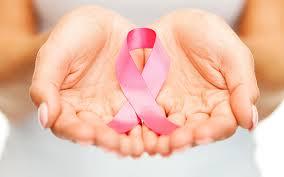For Every Two Minutes, A Woman Dies From Cervical Cancer
Submitted by Christopher Tusiime on

October is the Cancer Awareness Month, for the annual campaign to increase awareness of the disease. While most people are aware of cancer, many forget to take the steps to have a plan to detect the disease in its early stages and encourage others to do the same.
Here are the startling facts you need to know.
- Cervical cancer is the second most prevalent cancer among women. Yet not many of us are aware of its severity
- Approximately 500,000 new cases of cervical cancer occur each year worldwide.
- Almost 80% of these cases occur in developing countries
- Worldwide, one woman dies from cervical cancer every two minutes
- For every two women who die from breast cancer, one dies from cervical cancer worldwide
- It is the leading cause of death of women in developing countries.
What is cervical cancer?
It is an abnormal cell growth in the Cervix, its main cause is a virus called Human Papillomavirus (HPV). 99.7% of cervix cancer cases are related to cancer causing HPV infections. HPV is a virus transmitted by skin-to-skin genital which may cause cervical cancer. Up to 80% of sexually active women will be infected with HPV at some point in their lifetime. Prevalence is greatest in women aged less than 25 years. Therefore by preventing the incidence of cancer causing HPV infection, we can significantly reduce the incidence of cervical cancer
Screening for cervical cancer or pre-cancers
Screening helps in early detection of the cancer and diagnosis and treatment of pre-cancer lesion that may develop into cervical cancer. This is done by use of a Pap smear test
Effective screening leads to early detection and treatment. This prevents disease progression and reduces risk of death from cervical cancer. Innovative vaccine specifically designed for cervical cancer have recently been developed and are now available for vaccination to individuals between the ages of 12-45.Cervical cancer vaccination offers a new management option-primary prevention.
It is important to regard vaccination and screening as complementary tools in cervical cancer prevention to achieve a maximum level of protection against cervical cancer.
Prevention of cervical cancer through vaccination occupied with screening in countries where well established screening program exists would be the most active approach to protecting women about this disease. Vaccination may prove to be the best option to reduce the incidence of cervical cancer
Vaccination alongside screening will reduce the risk of cervical cancer other than screening alone
The above statistics are not merely numbers. They represent some one’s wife, mother, sister, daughter or friend, often in their prime lives. The freedom square is open to cervical cancer screening and vaccination, breast cancer detection, tetanus vaccination, high blood pressure, assessing for risk of heart disease, diabetes, hypertension, tuberculosis, circumcision, distribution of condoms, and blood donation among others: all happening until 16th Friday. Let’s go for screening, let’s protect ourselves.
- Log in to post comments
- 450 reads
